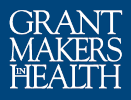Humana Foundation Advances Equity Through Community-Engaged Research Practices
Grantmakers In Health’s Maya Schane spoke with Heather Hyden and Soojin Conover of the Humana Foundation about the Foundation’s recently published report, Strengthening Science and Community Impact Through Equitable Research Practices. The report examines innovative research methods adopted by the Foundation’s partners to promote health equity in public health research through community-engaged research practices.
Collaborating for Impact: Providing Trust-Based Grantmaking and Technical Assistance to Support Local Resilience to Extreme Weather Events
In the last few years, there has been an increased number of extreme weather events, including wildfires, tornadoes, hurricanes, floods and heatwaves in the United States. In 2023, the United States experienced 28 disasters that cost at least $1 billion, the largest number of billion-dollar disasters in a single year on record (Smith 2024). While some areas of the country are more susceptible to these threats, there are no regions immune to disasters. According to a recent Gallup poll, 37 percent of adults in the United States report they have been personally impacted by at least one extreme weather event in the last two years, which is higher than the 2022/2023 survey result at 33 percent.
GIH Celebrates 30 Years of Helping Grantmakers Improve the Health of All People
In 2012 GIH celebrates its 30th anniversary. Ever since our modest beginnings as a three-year trial program of the Foundation Center, our charge has been straightforward: serve the field of health philanthropy to improve the health of all people. Today, GIH continues to carry out this challenging and rewarding mission, thanks in no small part to the ongoing support of our Funding Partners.
Making the Connection with HIT
Health information technology (HIT) is now widely regarded as a promising tool for improving the quality, safety, and efficiency of the health care delivery system – largely due to a major influx of federal funding and the Affordable Care Act. Despite its newfound prominence, the benefits of HIT were only championed by a small cadre of health care professionals a mere six year ago.
The One that Got Away: Emerging Leaders in Health Philanthropy on Moving up and Moving on
Does philanthropy in the 21st century offer a viable career path for rising leaders with fresh visions and several decades of potential contributions before them, or is it a significant, yet temporary stop on what is sure to be a varied career journey?
GIH President and CEO Lauren LeRoy to Step Down October 2012
Lauren LeRoy, who since 1998 has led Grantmakers In Health through a period of transformative growth and change, will step down as president and CEO in October 2012.

